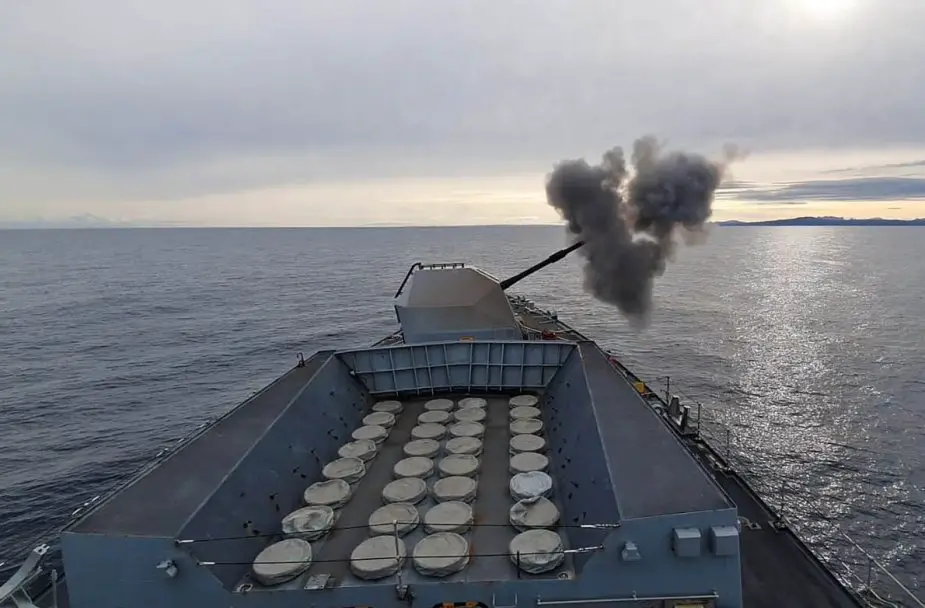Breaking news
British Navy's HMS Sutherland shows her flare during night shoot.
A Plymouth-based warship turned night into day the old fashioned way during war games off the coast of Scotland - but the Royal Navy can also light up hostile positions without the enemy knowing.
 HMS Sutherland firing with the 4.5in main gun (Picture source: Royal British Navy)
HMS Sutherland firing with the 4.5in main gun (Picture source: Royal British Navy)
Type 23 Frigate HMS Sutherland has been providing Naval Gunfire Support (NGS) for Exercises Joint Warrior and Griffin Strike, the final tests for an Anglo-French task group - the Combined UK and French Joint Expeditionary Force - that becomes operational next year.
As part of the exercise, Sutherland - which the Royal Navy says has probably been the busiest warship in its fleet during 2019 - lit up the night sky with parachute illumination star shell flares fired from her 4.5in main gun. This type of munition which bathes the battlefield in an eerie greenish-white light for about 30 seconds - has been used by the British military since the Great War.
However, the Royal Navy also has a more discreet method of pinpointing enemy positions - infra-red shells, that shine an invisible infrared light to spotlight the battlefield, allowing friendly forces wearing infrared goggles to see the enemy, without the enemy knowing he's being a lit up.
The illuminations came in the middle of 18 hours of gunnery during which time Sutherland laid down some serious lead: 180 rounds left the barrel of the 4.5in gun on the frigate’s forecastle (120 during the day shoot, 60 overnight) and crashed down on Cape Wrath as part of two exercises running concurrently.
The gunners in Sutherland’s operations room were fed target positions by observers ashore – specialists from 148 Battery Royal Artillery – who sought out ‘enemy’ trenches, mortar posts and coastal defences.
The gun bay team found the forecastle littered with empty shell cases when dawn broke today – while the smell of cordite explosive charges drifted through the frigate; nearly 100 high explosive shells were fired during the shoot.
Sutherland is attached to an Anglo-French task group led by FS Tonnerre and Britain’s flagship HMS Albion testing the ability of the two navies to work side-by-side – ready for next year when the idea of a joint task force becomes a reality, ready to deploy at short notice to respond to international events.
Exercise Griffin Strike is the final test of the concept – a mixed staff under the RN’s Rear Admiral Andrew Burns is directing the many moving parts. The exercise is taking place under the broader umbrella of the UK’s regular autumn war game, Joint Warrior, staged in, off and over western Scotland for two weeks each October.
A dozen NATO nations are involved, 3,725 personnel in all (2,771 of the sailors and marines, 635 from air forces and 319 troops on the ground), 16 warships, three submarines and nearly 60 aircraft, three-quarters of them jets.




























